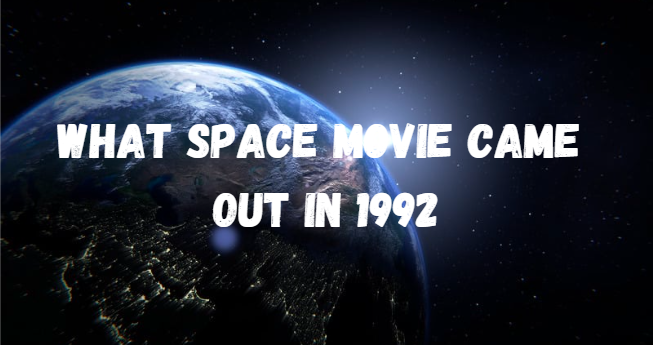In the vast expanse of science fiction cinema, the year 1992 holds a unique place. Two movies released that year particularly stand out for their unconventional takes on the genre: “Solar Crisis” and “Gayniggers from Outer Space.” While both films are markedly different in tone and content, each offers a distinct perspective on the possibilities and narratives of space exploration.
This article delves deep into these films, providing not only summaries but also analyses, interpretations, and insights that go beyond the surface to give readers a comprehensive understanding of what space movies came out in 1992.
Solar Crisis: A Tale of Solar Catastrophe
Synopsis
“Solar Crisis,” directed by Richard C. Sarafian (credited as Alan Smithee due to creative differences), is a science fiction thriller set in the near future. The Earth faces an unprecedented threat: a massive solar flare that could scorch the planet. To avert this disaster, a team of astronauts embarks on a perilous mission to the Sun. Their objective is to detonate a bomb to alter the Sun’s activity and save humanity from imminent destruction.
Cast and Crew
The movie features a star-studded cast, including:
- Tim Matheson as Steve Kelso, the mission’s lead astronaut.
- Charlton Heston as Admiral “Skeets” Kelso, Steve’s father and a high-ranking official.
- Peter Boyle as Arnold Teague, a corporate magnate with vested interests in the mission.
- Annabel Schofield as Alexandra Hayden, the scientist responsible for the bomb’s design.
Themes and Interpretations
“Solar Crisis” explores several profound themes:
- Humanity’s Relationship with Technology: The film underscores our reliance on technology to solve existential threats, reflecting contemporary anxieties about our technological future.
- Corporate Greed vs. Scientific Integrity: Peter Boyle’s character represents the conflict between corporate interests and scientific integrity, a theme that resonates with modern concerns about the influence of big business on scientific endeavors.
- Parent-Child Relationships: The strained relationship between Steve and his father, Admiral Kelso, adds a personal dimension to the narrative, exploring themes of duty, expectation, and reconciliation.
Critical Reception
Upon its release, “Solar Crisis” received mixed reviews. Critics praised its ambitious special effects and thematic depth but criticized its convoluted plot and uneven pacing. Despite its flaws, the film has garnered a cult following, appreciated for its earnest attempt to tackle complex scientific and philosophical issues.
Gayniggers from Outer Space: A Satirical Space Odyssey
Synopsis
Directed by Danish filmmaker Morten Lindberg, “Gayniggers from Outer Space” is a satirical short film that parodies the science fiction genre. The film follows a group of extraterrestrial beings from the planet Anus who arrive on Earth to free men from the oppression of women. These “Gayniggers” use their advanced technology to rid the planet of females, hoping to establish a homosexual utopia.
Cast and Crew
The film features:
- Coco P. Dalbert as Captain B. Dick, the leader of the Gayniggers.
- Sammy Salomon as Sgt. Shaved Balls, the mission’s second-in-command.
- Gerald F. Hail as D. Ildo, the ship’s technician.
Themes and Interpretations
While “Gayniggers from Outer Space” is often viewed through a lens of controversy due to its provocative title and content, it is essential to understand its satirical intent:
- Parody of Space Exploration Tropes: The film mimics and exaggerates the conventions of classic space exploration movies, highlighting the often absurd elements of the genre.
- Social Commentary: Despite its crude humor, the film can be interpreted as a critique of gender roles and societal norms, challenging viewers to reconsider their perspectives on sexuality and gender.
Cultural Impact and Controversy
“Gayniggers from Outer Space” has sparked significant debate. While some view it as a harmless parody, others see it as offensive and problematic. Its provocative nature has ensured it remains a topic of discussion in film circles, often cited in debates about the boundaries of satire and the role of controversial humor in cinema.
Analyzing the Legacy of 1992’s Space Movies
The Context of Early 90s Science Fiction
The early 1990s was a period of transition for science fiction cinema. The genre was evolving, incorporating more sophisticated special effects and exploring deeper philosophical and existential themes. Films like “Solar Crisis” and “Gayniggers from Outer Space” reflect this transitional phase, each in its unique way.
- Advancements in Special Effects: “Solar Crisis” showcased the burgeoning capabilities of special effects technology, attempting to depict the vastness and danger of space with unprecedented realism.
- Emerging Satirical Voices: “Gayniggers from Outer Space” exemplifies the growing trend of using satire to critique and deconstruct genre conventions and societal norms.
Comparative Analysis
While “Solar Crisis” and “Gayniggers from Outer Space” are vastly different in tone, they share a common thread: both challenge viewers to think beyond traditional narratives. “Solar Crisis” does so through its serious, high-stakes plot, while “Gayniggers from Outer Space” uses humor and satire to provoke thought.
Impact on Future Films
The legacy of these 1992 space movies can be seen in later films that blend serious science fiction with unconventional storytelling:
- “Interstellar” (2014): Like “Solar Crisis,” it combines a high-stakes space mission with deep emotional and philosophical questions.
- “The Orville” (2017-present): This TV series mirrors the satirical approach of “Gayniggers from Outer Space,” blending comedy with space adventure.
FAQs ABOUT What Space Movie Came Out in 1992
What is the plot of “Solar Crisis”?
“Solar Crisis” follows a team of astronauts tasked with preventing a catastrophic solar flare from destroying Earth. Their mission involves detonating a bomb on the Sun to alter its activity and save the planet.
What is “Gayniggers from Outer Space” about?
“Gayniggers from Outer Space” is a satirical short film that follows a group of extraterrestrial beings who come to Earth to eliminate women and create a homosexual utopia. The film parodies science fiction tropes and offers social commentary through its provocative humor.
Why was “Solar Crisis” criticized?
While “Solar Crisis” was praised for its special effects and ambitious themes, it faced criticism for its convoluted plot and uneven pacing. Despite this, it has gained a cult following over the years.
Is “Gayniggers from Outer Space” considered offensive?
The film’s provocative title and content have sparked controversy, with opinions divided. Some view it as a harmless parody, while others find it offensive. It remains a topic of debate in discussions about satire and controversial humor in cinema.
How have these films influenced modern science fiction?
“Solar Crisis” and “Gayniggers from Outer Space” have influenced modern science fiction by pushing the boundaries of the genre. “Solar Crisis” contributed to the development of realistic space disaster narratives, while “Gayniggers from Outer Space” demonstrated the potential of satire to critique and deconstruct genre conventions.
Conclusion: What Space Movie Came Out in 1992
The year 1992 brought us two remarkable space movies: “Solar Crisis” and “Gayniggers from Outer Space.” Each film, in its own way, expanded the boundaries of science fiction, offering audiences new ways to think about space, technology, and society.
While they may not have been blockbusters, their impact on the genre and their enduring legacy are undeniable. As we look back on what space movie came out in 1992, we see a year that contributed uniquely to the rich tapestry of science fiction cinema.



